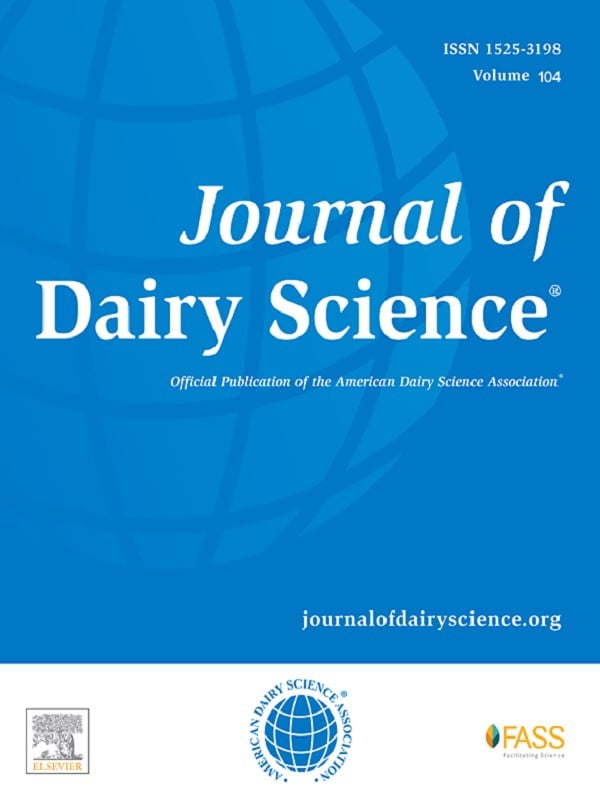Maintenance of plasma branched-chain amino acid concentrations during glucose infusion directs essential amino acids to extra-mammary tissues in lactating dairy cows
Richelle V Curtis1, Julie J M Kim1, John Doelman2, John P Cant3
1Department of Animal Biosciences, University of Guelph, ON, N1G 2W1 Canada.
2Trouw Nutrition Agresearch Canada, Guelph, ON, N1G 4T2 Canada.
3Department of Animal Biosciences, University of Guelph, ON, N1G 2W1 Canada. Electronic address: jcant@uoguelph.ca.
J Dairy Sci. 2018 May;101(5):4542-4553. doi: 10.3168/jds.2017-13236. Epub 2018 Feb 21.

Abstract
The objectives of this study were to investigate the effects of branched-chain AA (BCAA) supplementation when glucose is infused postruminally into lactating dairy cows consuming a diet low in crude protein (CP) and to test the hypothesis that low BCAA concentrations are responsible for the poor stimulation of milk protein yield by glucose. Twelve early-lactation Holstein cows were randomly assigned to 15% and 12% CP diets in a switchback design of 6-wk periods. Cows consuming the 12% CP diet received 96-h continuous jugular infusions of saline and 1 kg/d of glucose with 0, 75, or 150 g/d of BCAA in a Latin square sequence of treatments. Compared with saline, glucose infusion did not affect dry matter intake but increased milk yield by 2.2 kg/d and milk protein and lactose yields by 63 and 151 g/d, respectively. Mammary plasma flow increased 36% during glucose infusion compared with saline infusion, possibly because of a 31% decrease in total acetate plus β-hydroxybutyrate concentrations. Circulating concentrations of total essential AA and BCAA decreased 19 and 31%, respectively, during infusion of glucose, yet net mammary uptakes of AA remained unchanged compared with saline infusion. The addition of 75 and 150 g/d of BCAA to glucose infusions increased arterial concentrations of BCAA to 106 and 149%, respectively, of the concentrations in saline-infused cows, but caused a decrease in concentrations of non-branched-chain essential AA in plasma, as well as their mammary uptakes and milk protein yields. Plasma urea concentration was not affected by BCAA infusion, indicating no change in catabolism of AA. The lack of mammary and catabolic effects leads us to suggest that BCAA exerted their effects on plasma concentrations of the other essential AA by stimulating utilization in skeletal muscle for protein accretion. Results indicate that the glucose effect on milk protein yield was not limited by low BCAA concentrations, and that a stimulation of extra-mammary use of non-branched-chain essential amino acids by BCAA led to a decrease in milk protein yield.
Keywords: branched-chain amino acid; glucose; mammary uptake; milk synthesis.